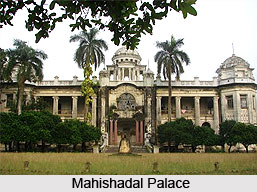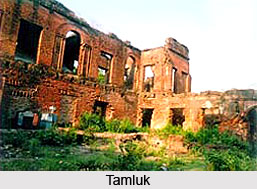 Archaeological sites of West Bengal illuminate the bygone phases of Indian history. The state hosts a number of such sites which have furnished interesting articles and facts about the ancient era. Evidences support the fact that several places of West Bengal were inhabited since prehistoric times. Excavation carried out at these places by the Archaeological Survey of India clearly sketches the social and cultural scenario of the state during ancient times. Relics of various dynasties have been found in different regions, which ruled over the state in different eras.
Archaeological sites of West Bengal illuminate the bygone phases of Indian history. The state hosts a number of such sites which have furnished interesting articles and facts about the ancient era. Evidences support the fact that several places of West Bengal were inhabited since prehistoric times. Excavation carried out at these places by the Archaeological Survey of India clearly sketches the social and cultural scenario of the state during ancient times. Relics of various dynasties have been found in different regions, which ruled over the state in different eras.
Ballal Dhipi
Ballal Dhipi, situated in Nadia district of West Bengal, is an archaeological site of national significance and was discovered by the Archaeological Survey of India (ASI) in the year 1980. The name of the place has been derived from the name of a 12th century ruler of Bengal Ballal Sen, from Sen Dynasty. A huge mound with several architectural remains has been found in Ballal Dhipi.
Chandraketugarh
Chandraketugarh is situated in North 24 Parganas district beside Bidyadhari River. Artefacts excavated in this region have revealed important artefacts belonging to Gupta, Kushanas and Maurya periods. The place has also furnished relics of pottery work, some of which contains Kharosthi and Brahmi inscriptions. Remarkable structures and terracotta work are also important discoveries of Chandraketugarh.
 Dihar
Dihar
Dihar, in the Bankura district, is a pre historic site. Archaeological excavations have furnished evidences which signify that the place was inhabited since 1000 BC. Relics of Saileswar and Sareswar temples form the major attraction of the region, which were established by King Prithvimalla of the Malla dynasty.
Mahishadal
Mahishadal, located in Purba Medinipur district, have furnished artefacts older than Harappan civilization. It is also known for a palace belonging to 16th century. Apart form this, the place houses several ancient temples, making it an important historical site.
Nanoor
Nanoor is another archaeological site in Birbhum district of the state. Ruins of Sen and Pala Dynasties have been found in this region.
Tamluk
Tamluk is a town in Purba Medinipur district of West Bengal which has served as an important archaeological site. Excavations have revealed the existence of settlements from 3rd century BC in this place, which also finds its mention in Puranas and the Mahabharata. Tamluk was earlier a seaport which gradually got buried under the river silt.
Gauda
 Gauda is located in Malda district along the west bank of River Ganga. The place has been found to have inhabited by Pala and Sen Dynasties in ancient times. Many historical monuments have been found and restoration works have been done for some of them. A mound has also been found near Gauda where ruins of an old palace have been discovered.
Gauda is located in Malda district along the west bank of River Ganga. The place has been found to have inhabited by Pala and Sen Dynasties in ancient times. Many historical monuments have been found and restoration works have been done for some of them. A mound has also been found near Gauda where ruins of an old palace have been discovered.
Pandu Rajar Dhibi
Pandu Rajar Dhibi is the first Chalcolithic or Copper Age site of the state located in Bardhaman district. The main mound of the site is related to King Pandu of the Indian epic Mahabharata. The site has revealed significant relics of a trading township where trade also spanned over the sea routes.
Moghalmari
Moghalmari, in Paschim Medinipur district, is an important site of archaeological excavation which has furnished remains of a Buddhist monastery belonging to the period between 6th to 12th centuries. Stucco decorations have also been found in the architectural relics. Articles of Gupta period are also some of the important discoveries of Moghalmari.
Other Archaeological Sites of West Bengal
In addition to these, other archaeological sites of West Bengal include Karnasubarna, Jagjivanpur, Bharatpur, Birbhanpur, Goswamikhanda, Haraipur, Hathikera, Kotasur, Laljal, Mangolkot, Rajbadi-Danga and Tildah.



















